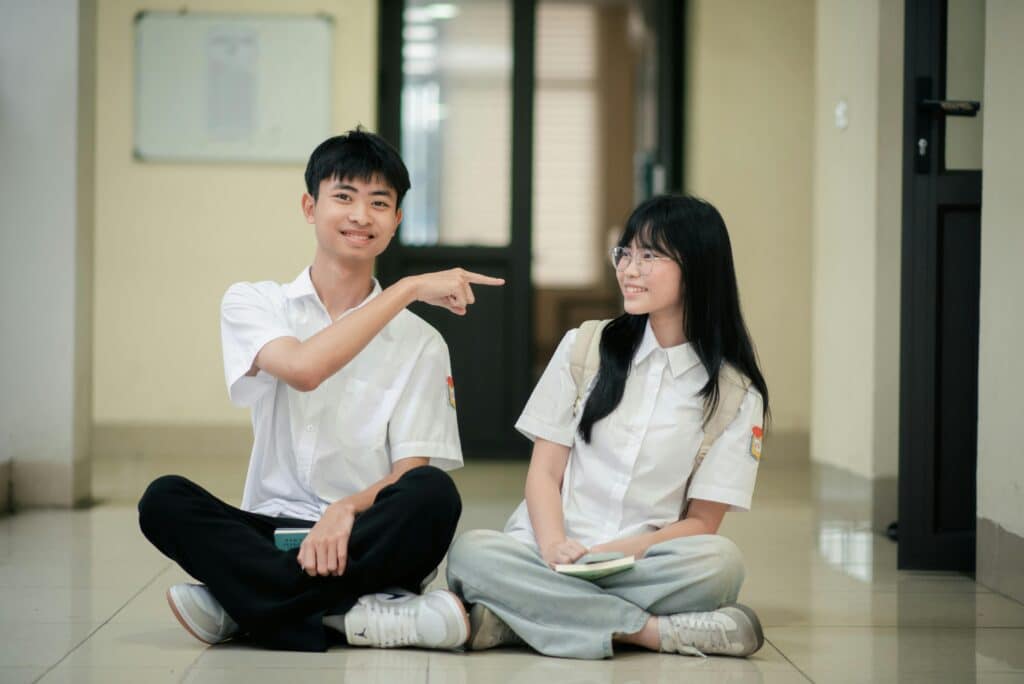Introduction to Problem-Solving Skills

Problem-solving skills are a vital component of both academic success and personal development for students. These skills encompass the ability to identify issues, analyze potential solutions, and implement effective strategies to overcome challenges. In today’s complex and fast-paced world, the capacity to solve problems has become increasingly important, as it equips individuals with the tools necessary to navigate various obstacles they may encounter in their academic and everyday lives.
One of the primary reasons problem-solving skills hold such significance is that they foster critical thinking. Students who develop strong problem-solving abilities can assess situations more thoroughly, allowing for better decision-making processes. Moreover, these skills encourage students to approach challenges from different perspectives, promoting creativity and innovation. By honing these abilities, students are not only prepared to tackle academic assignments but also to handle real-world scenarios that may arise in their personal and professional lives.
In addition to enhancing academic performance, effective problem-solving skills are essential for preparing students for future career opportunities. Employers consistently seek individuals who can think critically, evaluate situations, and devise effective solutions. The ability to systematically analyze problems and contribute to collaborative efforts in a work environment is highly valued across various industries. Therefore, fostering these skills in students not only benefits their immediate educational journey but also lays a foundation for successful careers and lifelong learning.
Furthermore, the development of problem-solving skills is crucial in cultivating resilience. Students encounter setbacks and obstacles regularly. Those equipped with strong problem-solving capabilities are more likely to approach these challenges with a positive mindset, recognizing them as opportunities for growth rather than insurmountable barriers. This adaptability will serve them well throughout their academic and professional paths, making problem-solving an indispensable skill for future generations.
Understanding Different Types of Problems

In the journey of education, students are frequently confronted with a myriad of problems that span across academic, social, and real-world issues. Understanding these distinct types is crucial for developing effective problem-solving skills, as each category requires tailored approaches and strategies. Academic problems often manifest in various forms, from difficulty grasping complex concepts to challenges in completing assignments or preparing for examinations. These issues primarily need analytical skills and a structured thought process to resolve, focusing on logical reasoning, time management, and resource allocation.
Social problems, on the other hand, are significantly different in their nature and require emotional intelligence and interpersonal skills to navigate effectively. These issues may arise in situations such as peer conflicts, communication barriers, or challenges in teamwork. Addressing social problems often involves understanding the perspectives of others, active listening, and collaborative problem-solving techniques. Students need to harness emotional awareness and empathy to tackle these issues, ensuring they contribute positively in social contexts.
Real-world problems encompass a broader and often more complex spectrum, including issues like environmental challenges, economic uncertainties, and societal inequities. These problems are typically multifaceted, necessitating critical thinking, creativity, and a robust understanding of interrelated factors. Students who cultivate an ability to assess and analyze these real-world problems can develop innovative solutions that extend beyond theoretical knowledge. By recognizing the different types of problems they might face, students can apply specific problem-solving strategies effectively, adapting their methods to the context and nature of the issue at hand.
Strategies for Enhancing Critical Thinking

Critical thinking is a vital component of problem-solving and is essential for students as they navigate various challenges in their academic and personal lives. One of the most effective strategies for cultivating critical thinking skills involves questioning assumptions. This practice encourages students to critically evaluate the foundational beliefs that underlie their reasoning. By fostering an environment where questioning is welcomed, educators can empower students to explore alternative viewpoints and consider the merit of differing opinions.
Another key technique is the analysis of information. Students should be trained to dissect information critically, assessing its credibility, relevance, and reliability. This can be achieved through activities that involve comparing sources, identifying biases, and examining the evidence presented in various contexts. For example, students might be assigned a project that requires them to research a controversial topic, allowing them to practice gathering data from multiple sources and determining the strength of the arguments made.
Furthermore, evaluating results is crucial for developing critical thinking skills. After completing a task or solving a problem, students should reflect on their approach and the outcomes. This reflective practice can involve questions such as: What worked well? What could have been done differently? How could the results inform future decision-making? Engaging in such dialogues with peers offers a collaborative element to the learning process, promoting a deeper understanding of their problem-solving techniques.
Incorporating practical activities that focus on these strategies can significantly enhance students’ critical thinking capabilities. For instance, students can participate in debates, where they must defend their viewpoints and respond to counterarguments. Furthermore, case studies present real-life problems that require critical analysis and creative solutions. These experiences contribute to a more profound comprehension of complex issues, rendering students better prepared to think critically and tackle problems effectively in their future careers and personal lives.
Collaborative Problem-Solving Activities

Collaborative learning plays a critical role in enhancing problem-solving skills among students. By engaging in group activities, students not only develop their individual abilities but also learn the importance of teamwork and collective reasoning. These activities create a dynamic environment in which students can share diverse perspectives, leading to more robust problem-solving strategies.
One effective approach is the use of group projects that require students to tackle complex issues together. For instance, a project to design an eco-friendly product encourages students to collaborate, brainstorm, and critically analyze different solutions. This process not only helps them build interpersonal skills but also teaches them how to approach problems from various angles. Each student brings unique insights and knowledge, enriching the group’s overall thinking and fostering creativity.
Another beneficial collaborative activity is the implementation of case studies. In small groups, students analyze real-world scenarios, allowing them to apply theoretical knowledge to practical situations. This method encourages discussion and deliberation, promoting an exchange of ideas while honing analytical skills. As students work together to dissect the case, they learn to articulate their thoughts effectively and consider alternative viewpoints, leading to a deeper understanding of problem-solving mechanics.
Moreover, peer teaching is a powerful collaborative technique that enhances skill development. By working in pairs or small groups, students can explain concepts to one another and resolve misunderstandings collaboratively. This not only reinforces their knowledge as they teach but also cultivates a supportive learning environment where students feel comfortable expressing their challenges without fear of judgment.
Incorporating collaborative problem-solving activities into educational practices greatly benefits students. Such interactions foster teamwork, improve communication skills, and encourage innovative thinking, all essential elements for effective lifelong learning. These environments allow students to not only share their ideas but also to adopt and refine their problem-solving skills collaboratively.
Encouraging a Growth Mindset

The concept of a growth mindset, as popularized by psychologist Carol Dweck, emphasizes the belief that abilities and intelligence can be developed through dedication and hard work. In the context of education, fostering a growth mindset is vital for enhancing problem-solving skills in students. When students believe they can improve, they are more likely to take on challenges, persevere through difficulties, and learn from their mistakes. This resilience is key in developing effective problem-solving strategies and becoming lifelong learners.
Teachers play a pivotal role in establishing a classroom culture that promotes a growth mindset. One effective strategy is to model the attitudes associated with a growth mindset. Educators can share their own experiences of overcoming challenges and highlight instances when they learned from setbacks. This transparency helps students understand that encountering difficulties is a natural part of the learning process.
Another approach is to emphasize effort over innate ability. Teachers can encourage students to focus on the process of learning rather than the end result. By praising effort, progress, and perseverance rather than mere correctness, students are more likely to embrace difficulties and engage in creative problem-solving. This shift in focus helps normalize mistakes as essential learning opportunities, thereby prompting students to approach problems with curiosity and determination.
Additionally, incorporating reflective practices into the classroom can deepen students’ understanding of their learning journeys. Encouraging students to reflect on their problem-solving experiences allows them to analyze what strategies worked, what did not, and how they can improve in the future. These reflections can further engrain the principles of a growth mindset and solidify their capacity to tackle complex challenges.
Ultimately, cultivating a growth mindset is integral to enhancing students’ problem-solving skills, as it equips them with the resilience and positive attitude necessary to view challenges as stepping stones toward success.
Integrating Technology in Problem-Solving Education

The integration of technology into problem-solving education has transformed the learning landscape, enabling educators to adopt innovative approaches that enhance students’ critical thinking and analytical skills. Various technological tools and resources have emerged as essential components of modern educational practices, providing opportunities for students to engage actively in their learning experiences. Educational software, applications, and online platforms are now prominent facilitators of problem-solving tasks across diverse subjects.
One notable resource is educational software such as GeoGebra, which empowers students to visualize mathematical problems and explore geometric relationships interactively. With its dynamic algebra and geometry features, this tool not only helps learners understand complex concepts but also encourages experimentation and critical analysis. Similarly, platforms like Kahoot! offer engaging quiz-based games that reinforce students’ knowledge while developing their problem-solving skills in a collaborative environment.
Another area where technology excels is through coding and programming tools. Platforms such as Scratch and Code.org introduce students to logical reasoning and systematic problem-solving methods through creative coding projects. These interactive environments allow learners to construct their own algorithms and learn through trial and error, cultivating resilience and adaptability—key traits in any problem-solving scenario.
Moreover, online learning platforms like Coursera and edX provide access to a wide array of courses focused on critical thinking and problem-solving across various disciplines. By allowing students to learn at their own pace and providing real-world problem-solving scenarios, these platforms not only enhance academic performance but also prepare students for future challenges in their personal and professional lives.
By successfully implementing these technological tools and resources, educators can create enriched learning environments that stimulate students’ interest in problem-solving and foster skills that will be indispensable throughout their lives.
Real-Life Applications of Problem Solving

Problem-solving skills are integral in navigating everyday challenges, as students often encounter various issues both academically and personally. Recognizing the significance of these skills, educators should emphasize real-life applications of problem-solving techniques. For instance, students can analyze everyday dilemmas, such as budgeting their weekly allowance or organizing group projects effectively. By engaging with tangible situations, learners enhance their critical thinking abilities and build confidence in their problem-solving methods.
One effective approach is to encourage students to draw parallels between their academic experiences and real-world challenges. For example, a math problem involving ratios can be connected to cooking recipes, where ingredient adjustments require a strong grasp of proportional thinking. Similarly, science lessons can be anchored in practical scenarios, such as environmental issues prompting students to devise strategies to reduce waste in their communities. This relevance bridges the gap between theoretical knowledge and practical utility.
Furthermore, students can benefit from collaborative problem-solving exercises. Working in groups on community service projects or school-based initiatives allows students to understand different perspectives and develop teamwork skills. As they encounter challenges together, they learn to navigate conflicts, prioritize tasks, and effectively communicate solutions. These experiences not only reinforce their academic learning but also cultivate essential soft skills that are valuable in both personal and professional domains.
In essence, integrating real-life applications of problem-solving into the educational curriculum fosters an environment where students can recognize and tackle challenges beyond the classroom. By nurturing their ability to apply knowledge and skills in various contexts, educators prepare students for a lifetime of critical thinking and effective problem resolution. This holistic approach ultimately emphasizes the importance of adaptable problem-solving in everyday life, equipping students with the tools needed to thrive in an ever-changing world.
Assessing Problem-Solving Skills

Evaluating students’ problem-solving skills is essential in fostering their ability to tackle complex challenges. By employing various assessment techniques, educators can effectively measure student progress and identify areas for improvement. One prominent method is self-reflection, which encourages students to analyze their thought processes and approaches to problem-solving. Through guided reflection prompts, students can articulate their understanding of problems and evaluate their strategies, fostering a growth mindset.
Incorporating peer evaluation is another valuable resource for assessing problem-solving skills. This collaborative approach promotes critical thinking as students provide constructive feedback to one another. By reviewing peers’ problem-solving methods, students can gain insight into diverse approaches, enhancing their learning experience. Furthermore, peer evaluation fosters a sense of accountability and encourages students to take ownership of their learning, allowing them to recognize both strengths and areas needing development.
Project-based assessments serve as an effective tool for evaluating problem-solving abilities. By immersing students in real-world scenarios that require critical thinking and application, educators can observe how students navigate challenges. Utilizing rubrics that outline specific problem-solving criteria ensures that assessments are comprehensive and fair. This method promotes not only the consolidation of knowledge but also the development of transferable skills, allowing students to apply their learning in various contexts.
Additionally, incorporating formative assessments throughout the learning process aids in tracking students’ problem-solving progression. These assessments provide ongoing feedback, giving educators the opportunity to adjust instruction based on student needs. Ultimately, employing a variety of assessment strategies such as self-reflection, peer evaluation, and project-based assessments equips educators with effective tools to evaluate and enhance students’ problem-solving skills, ensuring they are prepared for lifelong learning challenges.
Conclusion and Next Steps

In summary, the development of problem-solving skills in students is a crucial aspect of their overall education and future success. Throughout this blog post, we have explored various effective strategies that can be employed by educators and parents alike. These strategies include fostering a growth mindset, utilizing real-world scenarios, encouraging collaborative learning, and promoting critical thinking. Each of these approaches plays a significant role in equipping students with the necessary tools to navigate complex problems in both academic and everyday situations.
The significance of continuous practice cannot be overstated. As with any skill, regular reinforcement and the application of problem-solving techniques enhance students’ abilities over time. By integrating these skills into daily learning activities, educators can cultivate an environment where students feel confident in their capacity to tackle challenges. It is essential for parents to also participate in this learning journey by creating opportunities at home that encourage their children to engage in problem-solving tasks.
Looking ahead, it is vital that both educators and parents commit to implementing the strategies outlined in our discussions. Regular assessment of students’ progress and adapting methods to suit individual needs will ensure effectiveness. The ultimate goal is to nurture students who not only excel academically but are also equipped to face real-world challenges. Encouraging students to tackle problems with creativity and resilience will set them on a path toward lifelong learning and success. In conclusion, fostering problem-solving skills in students is a collaborative effort that must be sustained over time to yield lasting benefits.


Pingback: Engaging Math Games to Boost Student Focus in Class